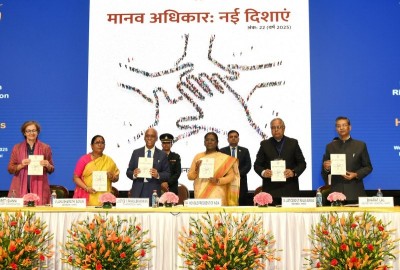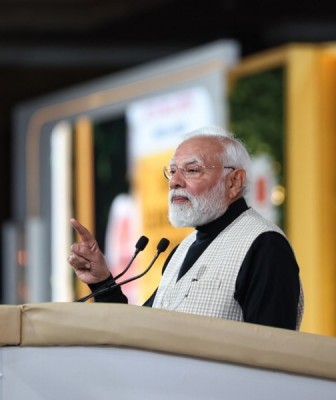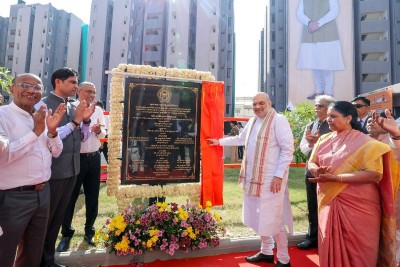
Balochistan: CPEC - Escalating Threat
On December 10, 2018, the China-Pakistan Economic Corridor (CPEC) Cell, in its briefing to Balochistan Cabinet, revealed that Balochistan’s share in the USD 62 Billion CPEC project was a miniscule nine percent, about USD 5.6 Billion. It was also disclosed that, out of this committed sum, less than USD one Billion had been spent in over five years, since May 22, 2013, when CPEC was launched. The stunned Cabinet members reportedly described CPEC spending in Balochistan thus far, as “a joke”.
In its briefing, the CPEC Cell also disclosed that the current shortfall of 700MW in the Province meant that all the new power injected into the grid as a result of CPEC power projects had not found its way to Balochistan. On October 23, 2018, China engaged the World Bank to undertake a study on the real potential of CPEC investment and its future prospects.
Expressing concern over the dismal share of the Province in development projects under the CPEC, on December 9, 2018, the Balochistan Government disclosed that only two projects — the Gwadar Port and Hubco Coal Power Plant — had been approved for the Province till that point, since CPEC’s launch on May 22, 2013. The Government, moreover, claimed that even these two projects had no direct benefits for the people of Balochistan. Significantly, the Gwadar Port is the epicentre of the entire CPEC project in Pakistan, yet the residents of the city have a hard time getting drinking water on a daily basis. In order to address the drinking-water shortage in Gwadar, the Federal Government has announced many desalination plants, but none has yet materialized.
On December 5, 2018, the ruling Balochistan Awami Party (BAP) founder Saeed Ahmed Hashmi stated, “despite passage of about five years the people of the Province have witnessed no development project initiated under the CPEC.”
The apprehension that CPEC will not benefit Balochistan has rightly been there for long. Indeed, the Senate (Upper House of the National Assembly) was informed on November 24, 2017, that 91 percent of the revenues to be generated from the Gwadar port as part of CPEC would go to China, while the Gwadar Port Authority would be left with a nine percent share of the income for the next 40 years. This was disclosed by the then Federal Minister for Ports and Shipping, Mir Hasil Bizenjo, after senators expressed concern over the secrecy surrounding the CPEC long-term agreement plan, with many observing that the agreement tilted heavily in China’s favour.
Moreover, there is also great anxiety that CPEC will convert the Baloch people into minorities in their own homeland. Noordin Mengal, a human rights campaigner from the Province stated, on March 17, 2017, that with an influx of outsiders as a result of the project, the identity of the Baloch was being threatened.
According to the Census 2017, the total population of Balochistan was 12.3 million. Census 2017 indicates the Baloch population (Balochi language speaking population) has shrunk from 61 percent of the total to 55.6 percent over a period of 19 years (Census 1998 to Census 2017) in the 21 Districts where the Balochi-speaking population form a majority.
Pakistan currently hosts a sizable Chinese population and the numbers are only slated to grow as the project progresses. Concerns about the demographic transformation of Balochistan have been reiterated in a December 28, 2016, report by the Federation of Pakistan Chambers of Commerce and Industry (FPCCI), which noted that, at the current and projected rate of influx of Chinese nationals into Balochistan, the native population of the area would be outnumbered by 2048.
Since the start of the groundwork on CPEC, more than 39,000 Chinese have come to Pakistan over the past five years, according to official data and documents reported on March 5, 2018. 7,859 Chinese were issued visas in 2013, at the start of the CPEC projects, soon after the Nawaz Sharif Government came to power. Another 69 visas were issued in 2014; 13,268 in 2015; 6,268 in 2016; and, according to informed officials at the Ministry of Foreign Affairs, an estimated 12,287 in 2017. In addition, about 91,000 Chinese nationals have visited Pakistan on tourist visas over this period.
Due to these reasons, there is persistent discontent among the ethnic Baloch with regard to CPEC. The Province is at the heart of the CPEC scheme – a massive series of projects that includes a network of highways, railways and energy infrastructure spanning the entire country. CPEC is a flagship project in China's ambitious Belt and Road Initiative (BRI). This discontent constitutes an enduring threat to Chinese engineers, workers and people associated with the constituent projects, with Baloch nationalists, who consider it part of a 'strategic design' by Pakistan and China to loot their resources and eliminate the Baloch culture and identity, strongly opposed.
In a sign of increasing anger against CPEC, in the first of its kind of attack, the Baloch separatist group, Baloch Liberation Army’s (BLA’s) ‘Majeed Brigade’ suicide squad, on November 23, 2018, carried out a suicide attack targeting the Chinese Consulate at Block 4 in the Clifton area of Karachi, the provincial capital of Sindh. At least six people, including three civilians, two Policemen, and a private security guard, were killed. Three terrorists involved in the attack were killed by the Security Forces (SFs). No Chinese national was hurt. Claiming responsibility for the attack, BLA disclosed that the attackers had been tasked to target the consulate.
On October 31, 2018, five construction workers of non-Baloch ethnicity were shot dead while another three suffered injuries in an attack near Ganz, some 15 kilometers west of Jiwani town in the Gwadar District of Balochistan. According to official sources, the labourers were working at a CPEC-related private housing scheme on Peshkan-Ganz road, which links Gwadar with Jewani, when a group of unidentified assailants riding motorcycles appeared on the scene and opened fire. Security officials identified four of the deceased as Naeem Ahmed and Hunzullah, residents of Karachi (Sindh); Irshad Ali of Sukkur (Sindh); and Muhammad Shakir of Multan (Punjab). The identity of the fifth deceased is yet to be ascertained. BLA 'spokesperson' Azad Baloch, claiming responsibility for the attack, stated,
The site attacked today was part of CPEC project… Today's attack is a clear message to China and all other countries that Balochistan is an occupied territory. We warn all military and other constructions companies to immediately stop working on their projects in Gwadar or they will be targeted by Baloch fighters.
Significantly, on October 29, 2018, Pakistan had organised a conference of 26 countries - the Asian Parliamentary Assembly Committee on Political Affairs - in its attempt assert the legality of its occupation in Balochistan. Warning against the ongoing 'colonisation' of Balochistan Azad Baloch stated,
China and Pakistan are settling Punjabis and Chinese in Gwadar and other areas of Balochistan's coastal belt to turn the Baloch into a minority under their expansionist designs… If the international community fails to fulfil their responsibilities and turns a blind eye to the Pakistani and Chinese colonisation of Balochistan, then the Baloch nation will have no other option but to target all non-Baloch settlers in Balochistan… The BLA will continue to resist against the occupation of Baloch Ocean and coastal belt…
He added that China and Pakistan were building around 70 housing schemes under the exploitative CPEC colonisation project.
On August 11, 2018, six persons – among them three Chinese engineers – had been injured in a suicide attack on a bus in the Dalbandin area of Chagai District in Balochistan. The bus, carrying 18 Chinese engineers, was being escorted by Frontier Corps (FC) troops to the Dalbandin Airport from the Saindaik copper and gold mines, when a suicide bomber tried to drive his explosives-laden vehicle into the bus. “The explosives-laden vehicle exploded near the bus on Quetta-Taftan Highway – and as a result three Chinese engineers, two FC soldiers and the bus driver were injured,” an unnamed Balochistan Levies official stated. Saifullah Khatiran, Deputy Commissioner of Chagai District, disclosed that the engineers were working on the Saindak Project, a joint venture between Pakistan and China to extract gold, copper and silver from an area close to the border.
Jiand Baloch, a BLA ‘spokesperson’, had then stated, “We targeted this bus which was carrying Chinese engineers. We attacked them because they are extracting gold from our region, we won’t allow it.” In a statement issued on Twitter, the BLA identified the suicide bomber as Rehan Baloch, who died in the attack, as the elder son of BLA's ‘senior commander’ Aslam Baloch.
On May 4, 2018, six ethnic Punjabi labourers were killed and one was injured in an incident of firing in the Laijay area of Kharan District. Levies sources said the labourers, who hailed from eastern Punjab, were working on a mobile tower and were sleeping in tents at the site when unidentified militants on motorcycles opened fire on them. The assailants escaped unhurt after the attack. There was no claim of responsibility.
Insurgents trying to disrupt construction of CPEC projects in Balochistan have killed 66 persons since 2014. Colonel Zafar Iqbal, a spokesperson for the construction company Frontier Works Organisation (FWO), on September 8, 2016, had stated, “The latest figure has climbed up to 44 deaths and over 100 wounded men on CPEC projects, mainly road construction in Balochistan, which began in 2014.” Since September 7, 2016, according to partial data compiled by the South Asia Terrorism Portal (SATP), another 22 persons have been killed in different CPEC related projects across the Province (till December 16, 2018).
Meanwhile, the Chief Justice of Pakistan (CJP) Mian Saqib Nisar stated, on December 10, 2018, “the situation of Balochistan is deplorable” despite the Province having huge mineral resources. The CJP emphasised that the people of Balochistan complained that they were being neglected by Islamabad and they did not even have basic rights.
With the CPEC Cell’s revelation of injustices against the Province coming to light, the enduring discontent among the Baloch people is likely to be further aggravated, and CPEC-related projects will come under an escalating threat in the months to come.
Support Our Journalism
We cannot do without you.. your contribution supports unbiased journalism
IBNS is not driven by any ism- not wokeism, not racism, not skewed secularism, not hyper right-wing or left liberal ideals, nor by any hardline religious beliefs or hyper nationalism. We want to serve you good old objective news, as they are. We do not judge or preach. We let people decide for themselves. We only try to present factual and well-sourced news.







